By Randy Scholfield
South Park is something special. This vast open landscape in western Colorado once was prized hunting lands for the Ute Indians. Today, the area remains a favorite outdoors playground for Colorado hunters, anglers and recreationists as well as a critical source of water for the Denver metro area.
Trout Unlimited and partners are working to keep it that way.
TU, the National Wildlife Federation and Park County officials met last week with Sen. Michael Bennet, who was in South Park to learn more about the BLM’s Master Leasing Plan for the area—part of the agency’s new Planning 2.0 approach, which emphasizes gathering input from local stakeholders early on to avoid, as much as possible, oil and gas leasing controversies.
Over lunch in Fairplay, Bennet heard from the group how much South Park means to its residents, and to the Front Range.
County Commissioner Mark Dowaliby, who like many residents visited the area years ago and never left, noted that Park County is 60 percent public lands. And while the county is staunchly conservative, he said, residents feel strongly about conservation and protecting the area’s natural resources.
The Master Leasing Plan provides an opportunity for locals to give the BLM feedback on what kind of management and protections they’d like to see. In simple terms, an MLP is a zoning plan to help ensure that we conserve our outdoor heritage, protect water supplies, and see that oil and gas development takes place responsibly and in the right places. That includes deciding where drilling shouldn’t occur.
“South Park is a tremendous migratory area,” said Bill Dvorak, a local rafting outfitter, TU member and National Wildlife Federation organizer. The area is home to large herds of deer, elk, pronghorn and moose. “That’s why NWF got involved. We identified this area as a place that needed different rules” for oil and gas leasing.
“This is the backyard of the Front Range,” TU’s Tyler Baskfield told Sen. Bennet. “We have 54 miles of Gold Medal waters, including the Dream Stream and Spinney Mountain Reservoir—and it’s within an hour and a half of anywhere on the Front Range.” The area, he pointed out, is a “huge driver for hunting and fishing in the state.”

Meeting in South Park: Bill Dvorak, Sen. Michael Bennet, TU's Tyler Baskfield
Indeed, South Park generates some $17 million a year in wildlife-related revenue, according to Colorado Parks and Wildlife. Moreover, Denver, Aurora and other Front Range communities depend on South Park reservoirs for more than one-third of their drinking water. That’s why Denver Water and other providers have supported the MLP process.
Sportsmen’s groups like TU and NWF aren’t opposed to responsible energy development. That said, they want drilling done right and carefully sited, because some natural areas are simply too valuable to develop.
South Park has proven underground oil and gas reserves, but the fields are fragmented and disjointed, making extraction more difficult. Still, the reserves are there, and they could be targeted in the future—all the more reason to put in place “smart from the start” rules that clarify what areas can be developed and how.
After the meeting, Sen. Bennet accepted the group’s invitation to do a little fishing on the Elevenmile stretch of the South Platte. While the fishing wasn’t on fire that afternoon, Sen. Bennet managed to land the one fish brought to net by the group—a nice brown trout. The senator called the Elevenmile canyon stretch “spectacular.”

Sen. Bennet fishing in Elevenmile Canyon stretch of South Platte: 'Spectacular' place
Asked what he is hearing from constituents while travelling the state, Sen. Bennet didn’t skip a beat, saying that Coloradans are tired of Washington, D.C.’s dysfunction: “They want us to work together to get something done.”
Maybe D.C. could learn something about the spirit of cooperation here in South Park. While it’s still getting started, the MLP already has prompted diverse local stakeholders, from ranchers to conservationists, to work together on key ideas for protecting public lands, including setbacks from Gold Medal streams and protection of critical game migration corridors, proving that collaboration is the key to solving public land management challenges.
Agency officials are expected to deliver the draft MLP for South Park this fall, which will then be open to further public input. We hope the BLM will stay on track to ensure this important process moves forward in a timely manner.
Thanks to Sen. Bennet for spending time in South Park and for championing the MLP’s collaborative, “smart from the start” approach. He clearly understands the value of South Park and the importance of balancing energy development with protection of our best wild places.
Randy Scholfield is TU’s director of communications for the Southwest region.
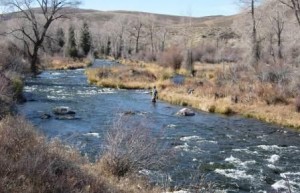






 Over the last decade population studies on the Animas have shown a decline. Although this year there wasn't a turn around, CPW Biologist Jim White told the Durango Herald, "It's been a really nice fish year. It’s definitely been more abundant than years past.”
Over the last decade population studies on the Animas have shown a decline. Although this year there wasn't a turn around, CPW Biologist Jim White told the Durango Herald, "It's been a really nice fish year. It’s definitely been more abundant than years past.” While the Animas is improving, the future of Cutthroat Trout in Hermosa Creek also have a bright future as stream improvements have been made to prepare for Colorado River Cutthroat reintroduction.
While the Animas is improving, the future of Cutthroat Trout in Hermosa Creek also have a bright future as stream improvements have been made to prepare for Colorado River Cutthroat reintroduction.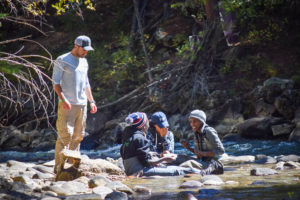 Forward Rising Inc, the creator of Forward Rising camp, is a new organization that focuses on engaging inner city girls through conservation, fishing, and the great outdoors. The organization hopes to use these activities to offer the girls outlets to the challenges they face.
Forward Rising Inc, the creator of Forward Rising camp, is a new organization that focuses on engaging inner city girls through conservation, fishing, and the great outdoors. The organization hopes to use these activities to offer the girls outlets to the challenges they face.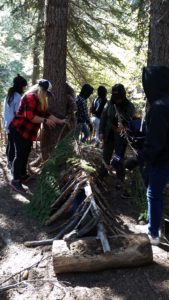 Saturday morning started out pretty chilly so everyone was moving a bit slower, but you could sense the excitement in the air! We kicked off our day with a session on wilderness survival from Mary Margaret Sweeney, PhD – Director at
Saturday morning started out pretty chilly so everyone was moving a bit slower, but you could sense the excitement in the air! We kicked off our day with a session on wilderness survival from Mary Margaret Sweeney, PhD – Director at 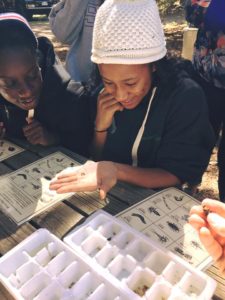 The girls suited up in waders and boots and headed to North Fork of the South Platte River to search for bugs. After turning over rocks and doing the “San Juan shuffle” in front of the bug seines we came away with a few bugs that would later be identified as mayflies, small craw-fish and a couple worms. After a lesson in entomology and discussions around the importance of healthy rivers we tied up some San Juan worms in hopes of tricking the fish!
The girls suited up in waders and boots and headed to North Fork of the South Platte River to search for bugs. After turning over rocks and doing the “San Juan shuffle” in front of the bug seines we came away with a few bugs that would later be identified as mayflies, small craw-fish and a couple worms. After a lesson in entomology and discussions around the importance of healthy rivers we tied up some San Juan worms in hopes of tricking the fish!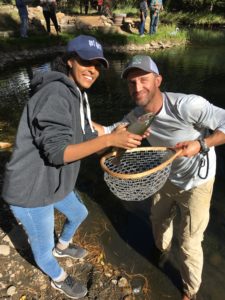 Sunday morning came faster than we expected and the weekend was coming to an end. The weekend contained many firsts – 1st time being in the river, 1st time putting up a tent and sleeping outside, 1st time catching a fish, 1st time making s’mores, 1st time seeing the stars and for some, 1st time being out of Denver. As we cleaned up camp and packed up the van there was still a lot of excitement about the weekend!
Sunday morning came faster than we expected and the weekend was coming to an end. The weekend contained many firsts – 1st time being in the river, 1st time putting up a tent and sleeping outside, 1st time catching a fish, 1st time making s’mores, 1st time seeing the stars and for some, 1st time being out of Denver. As we cleaned up camp and packed up the van there was still a lot of excitement about the weekend!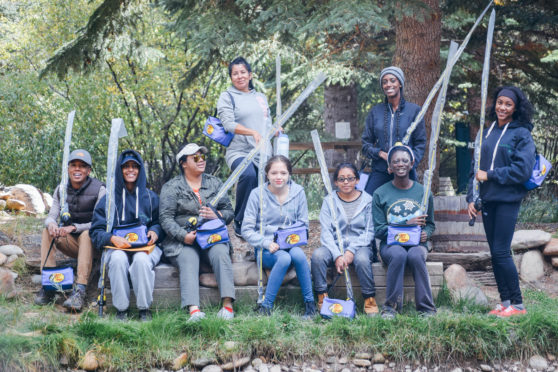
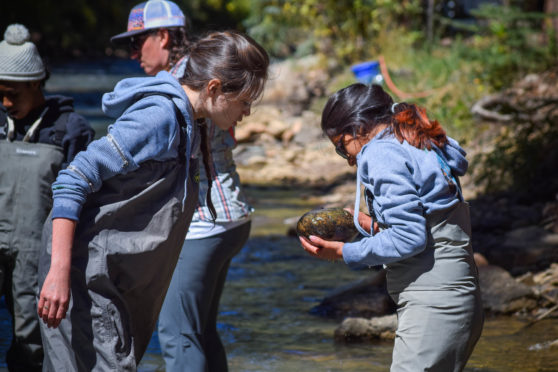
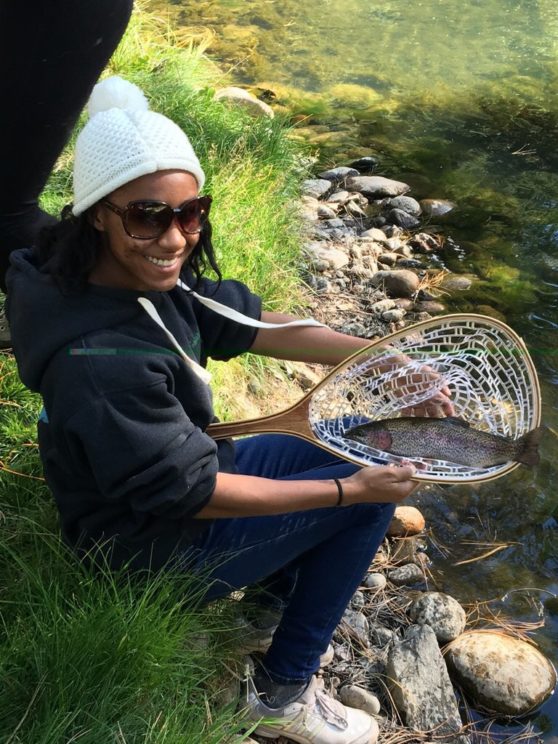
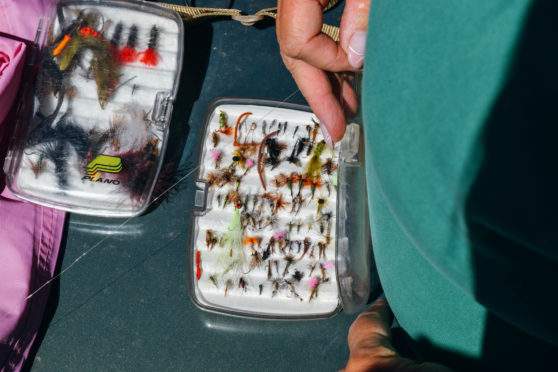
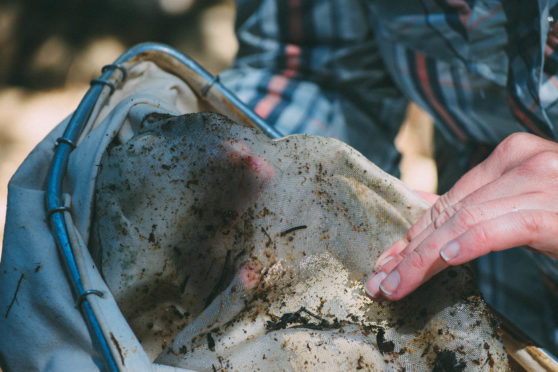
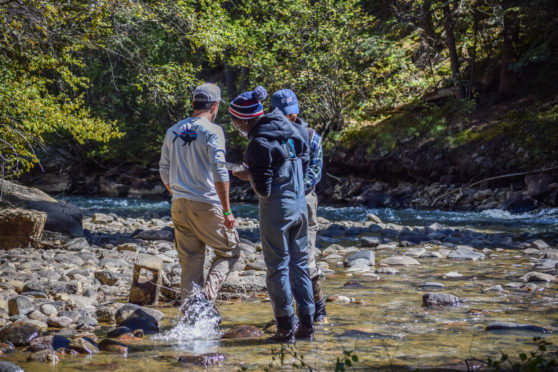
 Our chapter's ongoing conservation work on the South Platte River near Deckers strikes a chord with me. One of my earliest memories of being outdoors with my Dad is when he would take me there with his buddy and I would play in the shallows at the edge of the river. Later my good fishing buddy/college roommate and I spent many a pleasant weekend camping there and fishing those waters. Later on I had a great dog, a lab mix, and he would love to go along. We would do our best to keep him out of the water to avoid scaring fish, but he always managed to come home soaked, muddy, and contented. My buddy is busy with family now, and both my father and the dog have passed on. When the Hayman Fire roared through the area it broke my heart. Now the river is recovering with the help of our efforts, those of CUSP, and others. I am honoring the memories of those times I have spent on that river when I do my share to preserve its health and beauty.
Our chapter's ongoing conservation work on the South Platte River near Deckers strikes a chord with me. One of my earliest memories of being outdoors with my Dad is when he would take me there with his buddy and I would play in the shallows at the edge of the river. Later my good fishing buddy/college roommate and I spent many a pleasant weekend camping there and fishing those waters. Later on I had a great dog, a lab mix, and he would love to go along. We would do our best to keep him out of the water to avoid scaring fish, but he always managed to come home soaked, muddy, and contented. My buddy is busy with family now, and both my father and the dog have passed on. When the Hayman Fire roared through the area it broke my heart. Now the river is recovering with the help of our efforts, those of CUSP, and others. I am honoring the memories of those times I have spent on that river when I do my share to preserve its health and beauty.

 “It’s just transfer. It’s not like we’re selling them.”
“It’s just transfer. It’s not like we’re selling them.”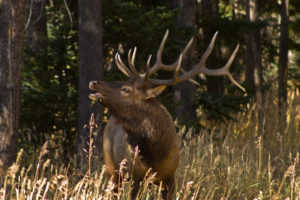 Public lands are for anglers, hunters, hikers, campers, backpackers, energy producers, mountain climbers, berry pickers, ranchers, horse packers, birders, timber operators, miners, snowmobilers, ATVer’s, mountain bikers.
Public lands are for anglers, hunters, hikers, campers, backpackers, energy producers, mountain climbers, berry pickers, ranchers, horse packers, birders, timber operators, miners, snowmobilers, ATVer’s, mountain bikers. Public lands are part of what define us as Americans. They are what remain of the great westward migration of the nation. They are the crucible upon which the character of the nation was formed. Our forebears left these lands to us, not so we could sell them to the highest bidder. They left them to us as an heirloom to pass on intact to the next generation. These lands are our birthright. They are a beacon of blinding and unwavering light on what it means to be free.
Public lands are part of what define us as Americans. They are what remain of the great westward migration of the nation. They are the crucible upon which the character of the nation was formed. Our forebears left these lands to us, not so we could sell them to the highest bidder. They left them to us as an heirloom to pass on intact to the next generation. These lands are our birthright. They are a beacon of blinding and unwavering light on what it means to be free.

